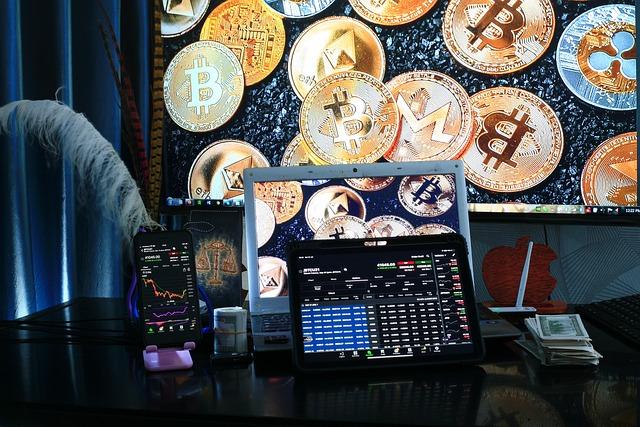Thinking about diving into the world of trading but not sure where to start? You’re not alone. Whether it’s stocks, forex, or crypto, becoming a trading expert might seem like a mountain to climb.The good news? It doesn’t have to be overwhelming. In this post, we’ll share some insider tips straight from the pros to help you sharpen yoru skills, avoid common pitfalls, and boost your confidence in the markets. ready to level up your trading game? Let’s get into it!
Getting Started with Trading Basics: What Every Beginner should Know
Jumping into the trading world without understanding the fundamentals is like diving into the ocean without knowing how to swim. One of the first things every newbie should focus on is grasping the key market concepts such as stock types, trading hours, and the basic mechanics of buying and selling. It’s crucial to get comfortable with terms like bid, ask, spread, and volumes-they are the building blocks of any prosperous trade. Alongside terminology, developing a disciplined mindset is vital. Many pros swear by maintaining patience and managing emotions, as impulsive decisions often lead to losses. Remember: mastering these basics will set a strong foundation for more advanced strategies down the road.
Before jumping into real trades,consider practicing with a simulated trading account. This risk-free environment allows you to test your strategies and learn from mistakes without losing money. Also, keep an eye on the market trends but don’t let every fluctuation dictate your moves. Below is a simple starter checklist to help keep your priorities in check:
- Learn the lingo: Familiarize yourself with common trading phrases and concepts.
- Start small: Use demo accounts or small investments initially.
- Set realistic goals: Know your risk tolerance and profit expectations.
- Track your progress: Keep a trading journal to review your decisions and outcomes.
- Stay curious: Continuously educate yourself with books, courses, and market news.
| Trading element | Why It Matters | Pro Tip |
|---|---|---|
| Bid & Ask | Fundamental pricing concepts | Watch the spread closely for better trade timing |
| Volume | indicates market interest | Higher volume often leads to better liquidity |
| Stop-Loss | Limits potential losses | Always set a stop-loss on every trade |

mastering Technical Analysis like a Pro trader
Becoming a pro at reading charts and spotting patterns isn’t about memorizing every indicator out there-it’s about understanding how price action and market sentiment dance together. focus on key tools like moving averages, RSI, and volume analysis to get a clearer picture of momentum and trend strength. Don’t just rely on one indicator; combining signals can reduce false alarms and improve your decision-making. And remember, technical analysis is as much an art as it is a science-trust your gut when it syncs with solid chart evidence.
Here’s a fast list of essentials every budding trader should master:
- Identify support and resistance levels to anticipate reversals or breakouts.
- Learn candlestick patterns to spot market psychology shifts in real-time.
- Understand volume – high volume often confirms the strength of a move.
- Practise setting stop-loss and take-profit orders aligned with your analysis.
| Indicator | What it Shows | When to Use |
|---|---|---|
| Moving Average | Trend direction & smoothing | Spotting entry/exit in trending markets |
| RSI (Relative Strength index) | Overbought or oversold conditions | Best for spotting reversals |
| Volume | Confirmation of price moves | Validating breakouts and breakdowns |
Building a Winning Mindset: Avoiding Common Trading Pitfalls
Mastering your mindset is often the silent game-changer in trading success. It’s easy to get swept up by emotions like fear and greed, but the real pros stay disciplined no matter the market’s mood swings.One of the biggest mistakes is chasing quick wins or doubling down after losses – this usually leads to reckless decisions. Rather, develop a routine that includes regular self-check-ins and journaling your trades. Monitoring your emotional triggers helps you spot potential pitfalls before they spiral out of control.
Building resilience means embracing the process, not just the profits. Here are a few game-tested habits to keep your head in the game:
- Set strict stop-loss limits to protect capital and manage risk effectively.
- stick to a trading plan and resist impulsive trades driven by hype or rumors.
- Maintain realistic expectations – not every trade will be a winner, and that’s okay.
- Review your performance regularly by analyzing what went right and where you slipped up.
Remember, trading isn’t about eliminating losses entirely, but making sure your wins outweigh them in the long run.
| Common Pitfall | Pro mindset Solution |
|---|---|
| Overtrading | Trade onyl with clear setups and risk parameters. |
| Ignoring Stop-Losses | Set and respect stop-loss levels religiously. |
| Getting Emotional | Pause to reflect before acting; keep ego in check. |
| Chasing Losses | Step back and stick to the original strategy. |
Creating a Solid Trading Plan That Works for You
Having a strong blueprint for your trades is non-negotiable if you want to thrive in the markets. your plan should clearly define entry and exit points, risk tolerance, and the assets you want to focus on. Remember, a solid plan isn’t about being rigid; it’s about giving yourself a structured approach that can adapt as you gather more experience and market insights. Keep it simple, actionable, and tailored to your personality-as what works for one trader might backfire for another.
Start by jotting down your trading goals and breaking them into manageable chunks. Consider these vital elements when crafting your plan:
- Risk Management: Decide on stop-loss levels and how much capital you’re willing to risk per trade.
- time Frame: Are you a scalper, swing trader, or position trader? Your approach will shape the plan.
- Strategy Rules: Specify the setups and indicators that trigger your trades.
- Review Schedule: Plan regular checkpoints to analyze performance and tweak your plan.
| Plan Component | Example |
|---|---|
| Risk Per Trade | 2% of account balance |
| Trading Time Frame | Daily charts (swing trading) |
| Entry signal | MACD crossover |
| Exit Signal | Trailing stop loss |
| Review Period | Monthly performance audit |
learning from the Pros: Insider Tips and Strategies to Boost Your Success
one of the best ways to elevate your trading game is by adopting the mindset and habits of seasoned pros. They don’t just rely on gut feelings-they combine disciplined research, continuous learning, and risk management like it’s second nature. As a notable example, many top traders emphasize the power of patience. Waiting for the right setups instead of chasing every market move can make a huge difference in profitability.Also, journaling trades is a common secret weapon. By tracking wins, losses, and emotional triggers, you gain insights that keep you sharp and prevent repeating costly mistakes.
Here are some insider strategies that pros swear by:
- Set clear goals: Know your target returns and acceptable risk before entering any trade.
- Embrace stop-loss orders: Protect your capital from unexpected downturns.
- Keep emotions in check: Avoid impulsive decisions by sticking to your plan.
- Constant education: Markets evolve, so should your skills and knowledge.
- Diversify across assets: Reduce risk by spreading exposure instead of putting all eggs in one basket.
| Pro Tip | Why it effectively works |
|---|---|
| Trade smaller positions | Limits risk, lets you learn without heavy losses |
| Analyze market sentiment | Helps predict short-term trends |
| Review trades weekly | Improves strategy refinement |
Q&A
Q&A: How to Become a Trading Expert – Tips from the Pros
Q: I’m new to trading. What’s the very first step to becoming a trading expert?
A: Start with education! Before throwing real money into the market, learn the basics-understand how stocks, forex, or crypto work. Use free online resources, watch tutorials, and maybe pick up a beginner-pleasant book. Knowledge is your foundation.
Q: There’s so much details out there-how do I avoid getting overwhelmed?
A: Great question! Focus on one market at a time.Trying to master stocks and crypto and forex simultaneously can be confusing. Pick your favorite niche and stick with it until you get comfortable.
Q: How important is having a trading strategy?
A: Super important. Pros don’t just wing it; they have well-thought-out strategies. Your strategy should include when to enter and exit trades,risk management,and how much capital to risk per trade.
Q: Speaking of risk management, what do the experts recommend?
A: Never risk more than 1-2% of your total trading capital on a single trade. This way, one bad trade won’t wipe you out. Using stop-loss orders is also a smart move to minimize losses.
Q: Can I learn from mistakes? How do pro traders handle losses?
A: Absolutely! Losses happen to everyone-even the pros. The key is to learn from each mistake and not let emotions take over. Keep a trading journal to track your trades and analyze what went right or wrong.
Q: How much time should I dedicate to trading each day?
A: It depends on your style. Day traders need to be glued to screens for hours, while swing traders might check charts a few times daily. But no matter what, consistency is key-make trading part of your routine.
Q: Are there any tools or apps that can definitely help me become a better trader?
A: tons! Charting tools like TradingView, news aggregators, and trade simulators are your best friends. Also, many pros use algorithmic trading software or bots, but start with the basics before jumping into advanced tech.Q: How do I stay updated with market trends like the experts do?
A: Follow financial news sites, subscribe to newsletters, join trading communities on Reddit or Discord. Engaging with others can give you fresh perspectives and keep you in the loop.
Q: What’s the biggest mindset tip from the pros for aspiring traders?
A: Patience and discipline. Don’t rush trades just to chase quick profits. Stick to your plan, manage your emotions, and treat trading like a marathon, not a sprint.
Q: Any final advice to wrap things up?
A: Keep learning and stay humble. Markets change, and so should your strategies. Be ready to adapt,never stop studying,and remember-expertise comes with time and experience.
Concluding Remarks
And there you have it – some tried-and-true tips straight from the pros to help you on your journey to becoming a trading expert. Remember, trading isn’t about luck; it’s about patience, strategy, and continuous learning. So keep studying the markets, trust your plan, and don’t be afraid to make mistakes along the way. With time and dedication, you’ll be making moves like a seasoned trader in no time. Happy trading!











